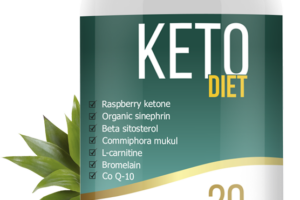The ketogenic diet, commonly known as the Keto Diet, has garnered widespread attention for its potential to promote weight loss, improve metabolic health, and provide various other health benefits. This essay aims to provide an in-depth review of the Keto Diet, examining its principles, mechanisms, potential benefits, drawbacks, and practical considerations.
I. Principles of the Keto Diet
The Keto Diet is characterized by a fundamental shift in macronutrient intake. It is typically high in fats (70-75% of total calories), moderate in protein (20-25% of total calories), and very low in carbohydrates (5-10% of total calories). The primary principle behind the diet is to induce a metabolic state called ketosis, where the body predominantly burns fat for energy instead of carbohydrates.
II. Mechanisms of Ketosis
Ketosis is the cornerstone of the Keto Diet’s effectiveness. When carbohydrate intake is significantly reduced, the body’s glycogen stores become depleted. In response, the liver begins to break down stored fat into molecules called ketones, which serve as an alternative energy source. Ketones can fuel the brain and other tissues, leading to potential weight loss as the body burns fat for fuel.
III. Potential Benefits
The Keto Diet has been associated with several potential benefits:
1. Weight Loss:
Ketosis can promote fat loss and reduce appetite, potentially leading to weight loss.
2. Improved Blood Sugar Control:
Some research suggests the Keto Diet may help stabilize blood sugar levels, making it beneficial for individuals with type 2 diabetes.
3. Enhanced Cognitive Function:
Ketones can provide a stable source of energy for the brain, potentially improving cognitive performance.
4. Epilepsy Management:
The Keto Diet has a long history of use in managing epilepsy, particularly in drug-resistant cases.
IV. Drawbacks and Challenges
While the Keto Diet offers potential benefits, it is not without drawbacks and challenges:
1. Initial Adaptation:
Many people experience the “keto flu” during the diet’s initial stages, which can include symptoms like fatigue, irritability, and headaches.
2. Nutrient Deficiencies:
A strict Keto Diet may lead to nutrient deficiencies, such as a lack of fiber, certain vitamins, and minerals.
3. Sustainability:
Maintaining ketosis can be challenging for some individuals in the long term due to the diet’s restrictive nature.
V. Practical Considerations
The practicality of the Keto Diet depends on individual preferences and lifestyles:
1. Meal Planning:
Successful adherence to the Keto Diet often requires careful meal planning and monitoring of macronutrient intake.
2. Social and Cultural Factors:
Social situations and cultural dietary norms can present challenges when following a strict Keto Diet.
VI. Conclusion
In conclusion, the Keto Diet offers a unique approach to nutrition that can yield potential benefits such as weight loss, improved blood sugar control, and enhanced cognitive function. However, it also comes with challenges and drawbacks, including initial adaptation difficulties and concerns about nutrient deficiencies. The decision to follow the Keto Diet should be made with consideration of individual health goals, preferences, and consultation with healthcare professionals or registered dietitians to ensure safety and long-term sustainability.











